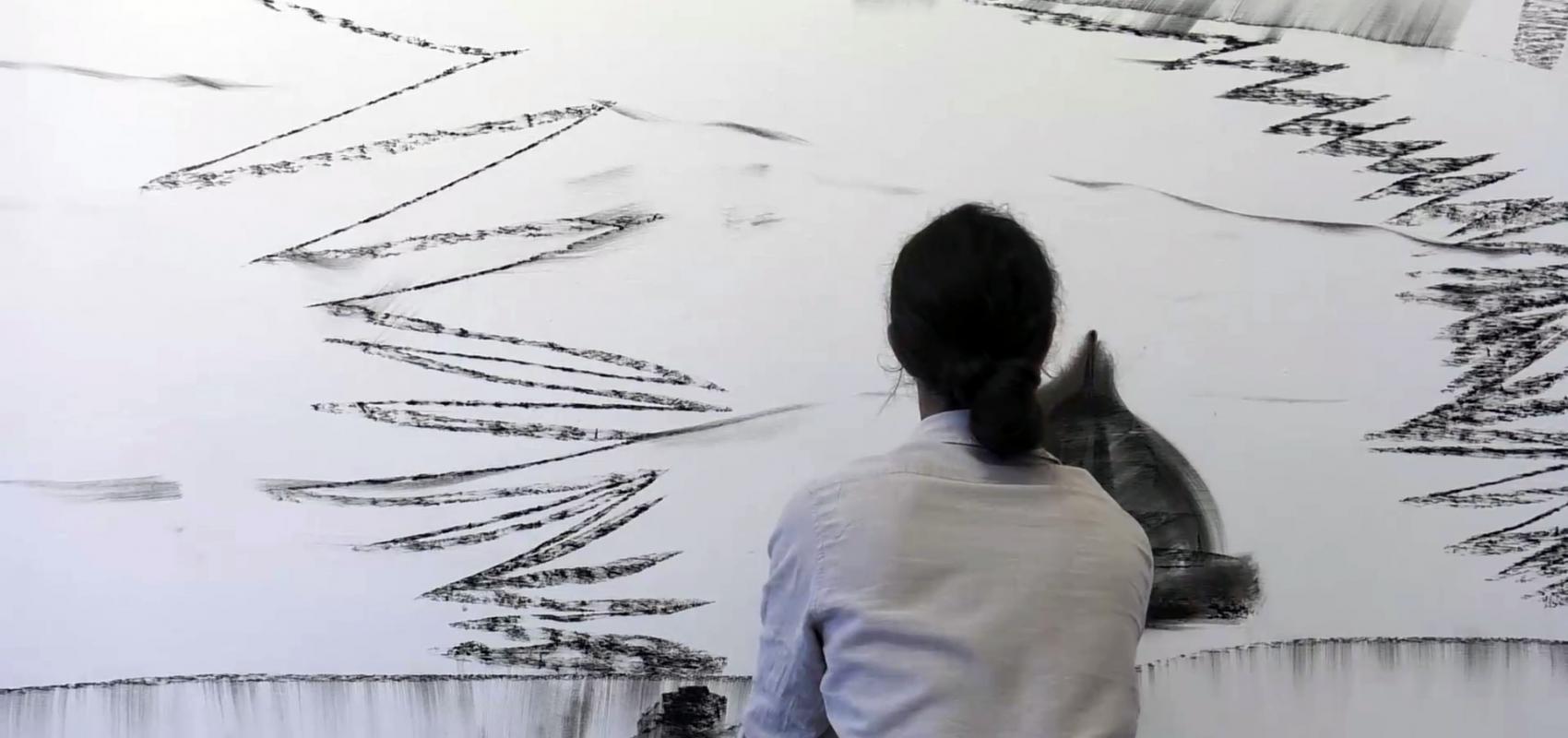Before beginning the dialogue with Irving Vera at Maxima, a sudden request came up: Why not create a large-scale piece on the wall chosen to record the interview? The artist, without thinking twice or showing any hesitant gesture, gave the definitive yes. All it took was a piece of graphite and a fertile imagination to embark on a journey with Humos y orillas, an exclusive work that we had the luxury of having in our exhibition space (Monserrate Street, corner of Tejadillo).
Irving is an artist who bets on poetic synthesis in his figuration, to speak from brevity and simplicity, always from forceful graphic gestures on this world of things and senses.
"His works constitute an awakening of the poetic image and are improvisations born from his own life experiences. His drawings have an important connection with other works and authors of the visual arts and literature that he has as referents," assures curator and art critic Caridad Blanco in the words of the catalog of Maxima's first exhibition, Luces, in April 2019.
"In this conceptual bet of his, the text is a catalyst of senses, while his lyricism touches the viewer in a suggestive way, from a sensitivity that seeks those images capable of making us vibrate today," she warned.
A quick perusal of Irving's performance is enough to see his evident connection with conceptualism, where he has been drinking from since his student days and has also been able to move away from the most orthodox practices of this type of art -as he states in the interview-, and open his own path in his pictorial motifs.
How much did conceptualism influence you and your generation?
ISA functioned as a school with a conceptual base at the time I was studying, I don't know about now. Personally, my closeness to Eduardo Ponjuan filled me with tools and approaches to that type of art.
Conceptualism is a trend of the late 60s and early 70s of the twentieth century, now it has become a buzzword to allude to certain types of processes that emphasize the mental, in operations that are beyond the simple representation of the real, or what you can just see.
Now, it has sort of become a general label, but originally it was something very specific and served as a name for a type of practice, in which the most important thing was the process that gave rise to the aesthetic experience, rather than the material means that were used to elicit that aesthetic experience.
At ISA that was the school where we learned and, of course, I incorporated operations of that type of proceeding, but I do not consider myself to be a conceptualist, thus orthodox.
Although certain operations filtered into my generation, at the level of ISA there was a reaction against an excess of conceptualism, against an academization of conceptual processes. There was a time when a theoretical defense of your work was more important than the actual process of creation. Part of my generation reacted against that.
Orestes Hernandez, Yornel Martinez too, there are several names, I think we were all united in that kind of reaction that opposed an academization of processes derived from what was conceptualism.
Speaking of the academy, Irving Vera has also been a teacher. What lessons are essential in art studies?
Pedagogy is a vocation and it is a marvel. It is fortunate for those of us who can exercise it. Besides art, it is a close relationship with other human beings who share a passion with you. It forces you to study, to keep learning.
The need to understand the conflicts of a student generates a bridge that has made me become aware of processes that I do unconsciously and find tools for teaching, which generate a lot of well-being for me, especially if the student is sincerely interested.
Your pieces were part of the collective exhibition Luces, at the Maxima Gallery, two years ago. What distinguished those works in particular?
In relation to the other proposals (Juan Suarez Blanco, Douglas Perez Castro and Jorge Lopez Pardo), mine had to do with how the texts oriented the contents to certain graphic gestures and made it make a difference within the exhibition.
Humos y orillas is the work you have just created in Maxima. What is its poetics?
I just improvised this work, totally. Improvisation is one of the bases of my work, because it allows me to project and draw from within, to travel through my own imaginary until I find, if I may be redundant, sufficiently impregnating images. It's something I'm passionate about and improvisation allows you to do that: it gives the experience with drawing the character of a journey.
I have several lines of work, I have a line that is more conceptual, another abstract and one that is more narrative. I never force myself which line to go for when improvising, but one always prevails over the other and this one came out of the narrative line.
Smoke and shores, there is something of Buddhist imagery and philosophy behind it. Smoke is something extremely light and dissipates quickly. It is also a support and a vehicle of prayer, by the fact that it connects earth with heaven. Incense smoke is purifying, but at the same time it has this idea of carrying prayers from earth to heaven.
The shores are an image from Buddhist literature, they are thresholds that one reaches, but I tell you, that all came out of improvisation.
Published 07/26/2021.
"I'm not interested in being exclusively a technical artist" (Part II).
Irving Vera at Maxima.





